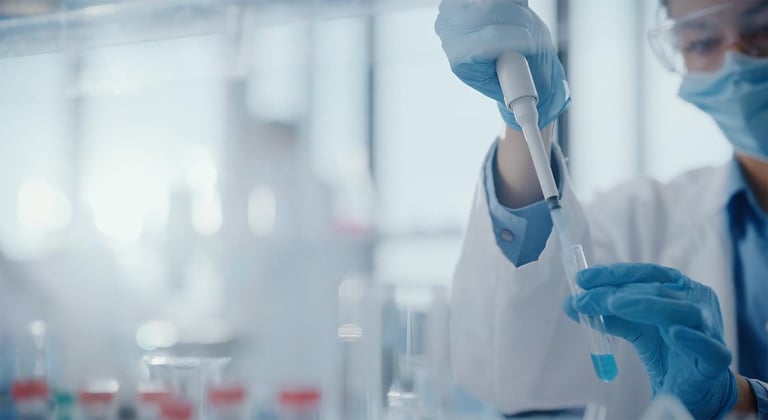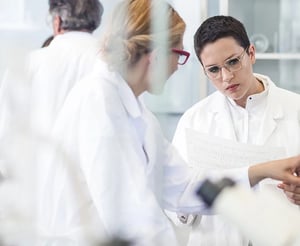Poolbeg Pharma plc (LON:POLB) Chief Executive Officer Jeremy Skillington caught up with DirectorsTalk for an exclusive interview to discuss their partnership with Eurofins Genomics, the ownership of the human challenge samples, the next steps in the data analysis programme, how AI analysis will be used to discover new drugs and the benefits of analysing the data through AI.
Poolbeg Pharma is a clinical stage infectious disease pharmaceutical company, with a novel capital light, clinical model which enables them to develop multiple products faster and more cost effectively than the traditional biotech model. This week, the company announced that it had partnered with the leading global biopharma services company Eurofins Genomics and joining me today to discuss the company is CEO Jeremy Skillington.
Q1: Now, you’ve partnered with Eurofins, it’s an exciting step in your AI data analysis programme, can you tell us more about that?
A1: We’ve partnered with Eurofins to do some genomic analysis of clinical trials samples that we acquired from Open Orphan. We’re going to focus these on RSV, which is another viral disease, maybe may people haven’t heard of it but it’s actually quite severe for the elderly and for the very very young.
So, basically, we’re going to look at transcriptomics which is analyse blood samples and see what genes are being regulated by the virus, what’s up regulated, what’s down regulated and what’s the immune system response to that virus. Again, with the ultimate goal of coming up with new targets and new therapies.
A very exciting step, we’re going to generate a lot of data from this initial step so that’s why we’re partnering with AI companies to analyse all of this data. They take in these very large data sets and break it down and come up with new targets for fighting diseases.
So, we’re very excited about this initial step but there’s more to come.
Q2: There’s been some confusion on the ownership of the Human Challenge samples, can you clarify this for us?
A2: When we de-merged from Open Orphan, when we spun-out out of Open Orphan, we received a non-exclusive licence to this Human Challenge data set so we can use it for our own purposes. Again, the ultimate goal, as I mentioned, is coming up with new drug targets, drug candidates.
Now, people have asked about the cost of this. When Poolbeg was formed, the shareholders in Open Orphan received shares in POLB as part of the spin-off so the payment came from the shares that these shareholders received.
From a clarification standpoint, we have non-exclusive access rights for a total of 30 months, we do pay for any work that Open Orphan needs to do to help us get access to this data and anything beyond 30 months, we can renegotiate a term.
The non-exclusive licence gives us those rights to mine this terrific data set, I hope that clarifies but it’s a little complicated, I appreciate, but as I say Open Orphan shareholders want to see us succeed so this is our way of achieving that.
Q3: What will be the next steps in the data analysis programme?
A3: We committed, during our IPO, that we would do data analysis of this large data set of viral challenge data. We are in discussions with a number of ASI companies and what these companies do is quite impressive, this is an industry that didn’t exist five years ago because the computers weren’t powerful enough.
It’s essentially taking these large amounts of data sets and analysing them, looking for patterns, looking for how the immune system responds to viruses, looking at the proteins that are in there, looking at the gene expression as I mentioned, the clinical responses, all of these are fed into these super-computers.
What comes out the other end are patterns or new targets so we have a number of proposals on the table so I expect an announcement in that space very soon.
We’ve got a very exciting time for the company to be mining this very exciting data set and, as I say, identifying new drug targets and drug candidates.
Q4: How will AI analysis be used to discover new drugs?
A4: When we get a virus, our immune systems kicks into gear, and the white blood cells, the B-cells, the T-cells, all of these immune cells start fighting the virus and what happens is they’re turning on genes, turning off genes and the virus is fighting back.
So, when you look at this in a large data set, or in a large scope, computers will be able to identify what targets are maybe pivotal in fighting back the virus, what targets are helpful to the virus. We can then come up with drugs that can hit those targets, we can block or enhance and again, help the body fight back stronger against these viruses.
AI will help us to identify these target candidates and also, identify drugs that hit these targets, that are available out there, that we bring in.
You did mention the outfit, we have a capital-light model so we plan to reposition drugs that already exist and run some human viral challenge studies to get early clinical data and then partner with pharma’s.
So, the work with the AI companies will help us to identify these drugs that then we can them put into the viral challenges and come up with human data. I’m not going to call it a shortcut as it’s a lot of work involved but, as I say, it’s just using super-computer powers to shorten to the timeline, the timeframe to getting these drugs and targets into tests in human challenge studies.
Q5: This will be the first time that challenge study data is analysed using AI, what are the benefits of analysing the data through AI?
A5: One of the things that I find most exciting about Poolbeg Pharma is accessing this data set.
To describe a human challenge – you get in a healthy volunteer, you bring them into the clinic and you take blood samples, all samples, from ‘day minus one’ we call it so this is when they’re at their healthiest. At day zero, you give them virus and you track the course of the disease, you track the immune response, you see how they’re reacting and responding and we take data samples every day.
So, what’s important about this AI analysis, compared to others, is that you can compare it to baseline so baseline is when they’re at their healthiest and you can see how these different proteins are expressing across the full disease cycle. They do recover very well in the end but having that ‘day minus one’ is an excellent baseline to have, data to compare to.
For other clinical programmes, you’re normally getting patients in that are already sick so you’ve nothing to compare them to, this is their disease state right now, but to be able to compare from ‘day minus one’ to when they’re sick, you can identify what proteins are up regulated or how they’re fighting best against the virus and again, we can exploit that.
So, the data set that we have brought over from Open Orphan is very exciting and the AI companies we’re talking to are very excited about this too. This is the first time they’re able to get this baseline data and compare to disease data too, from a scientific standpoint, from a medical standpoint, from a clinical standpoint, very exciting to see what comes out the other end.






































